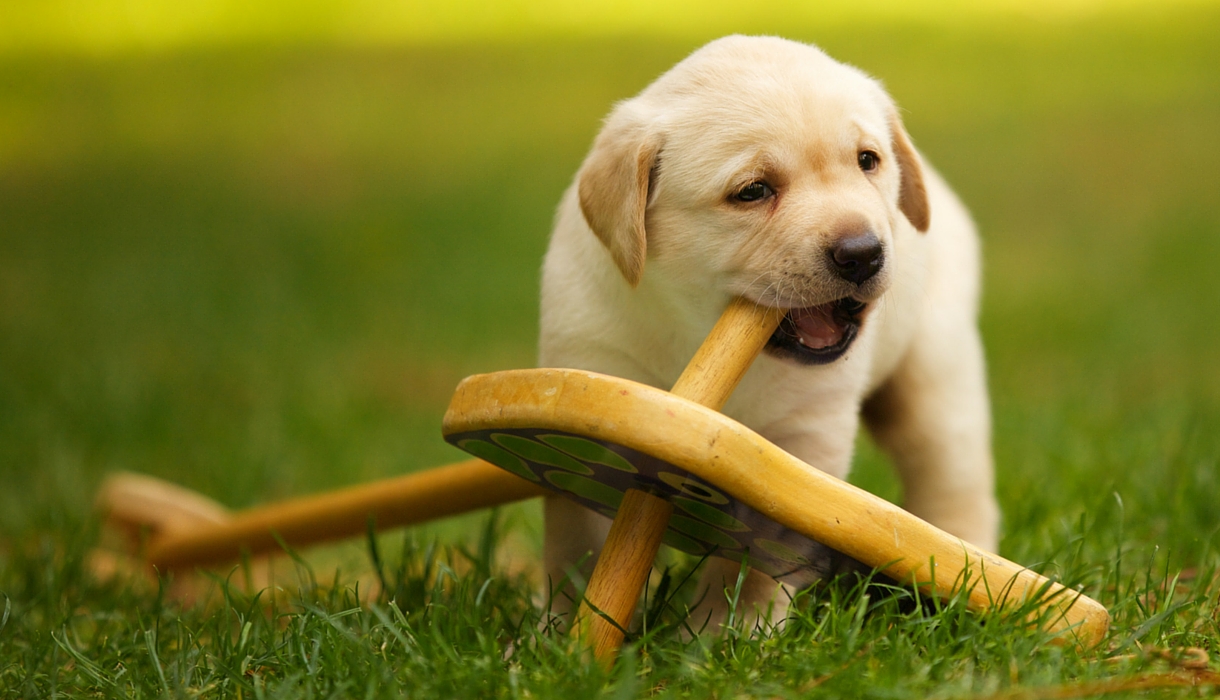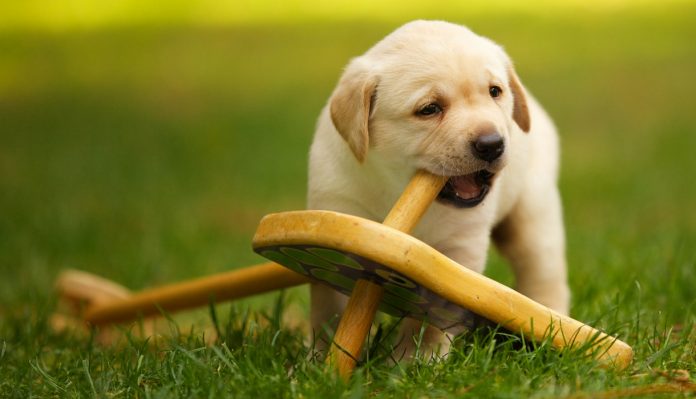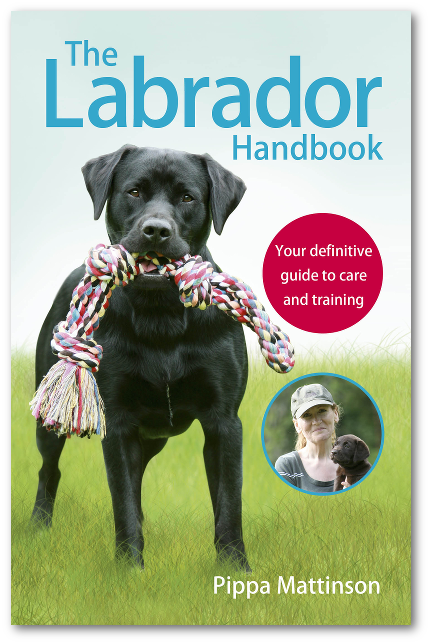Dogs lacking adequate bite inhibition can face substantial problems as they mature, a topic we’ll delve into subsequently. As a pet owner, it’s crucial that you shape your puppy’s bite inhibition abilities from the moment they’re welcomed home. This holds particularly true if the puppy doesn’t frequently engage with other dogs.
Guidelines to Curb Puppy Biting Behavior
Puppy biting is a universal phenomenon, and it can be quite painful. Equipped with sharp teeth, puppies bite down hard, often accompanied by aggressive growling. If you find your new puppy regularly biting your skin, it’s time to address this behavior.
You might feel inclined to reprimand your puppy sternly for biting as it’s essential they understand that biting is unacceptable. You’ve likely come across the technique termed ‘teaching bite inhibition,’ which promises to curb biting, despite taking longer. You might also encounter suggestions to disregard a puppy’s biting as ineffective and unwarranted.
Navigating contradictory advice can be bewildering. The key to confidence lies in understanding the rationale behind each approach.
Advanced Bite Inhibition
Early bite inhibition lessons are imparted by the puppy’s mother. However, her thick fur coat shields her from the puppy’s bites, making her less sensitive to them. Therefore, once your puppy joins your household, it’s your responsibility to further condition their bite inhibition to a level that prevents harm to human skin.
This nuanced ‘human-sensitive’ or ‘advanced’ bite inhibition is a critical aspect of a puppy’s development. Research indicates that if a puppy hasn’t acquired a good bite inhibition ability by roughly five months, they might never do so.
Strategies to Prevent Puppy Biting
Certain individuals, including some seasoned dog breeders, suggest stopping a puppy’s biting by strictly admonishing them every time they bite. Some even advocate for physical punishment, stating its effectiveness. This approach might initially appear reasonable, but it carries potential pitfalls. Abruptly halting a puppy’s biting can yield immediate results but may compromise more significant objectives.
The downside of penalizing a puppy for biting is that they quickly learn to discriminate about who they bite. This becomes a critical issue in households with children, as puppies continue to bite them fiercely, long after they’ve learned that biting adults leads to unpleasant or painful repercussions.
While this might seem unimportant if you don’t have children, many experts agree that abruptly stopping a puppy from biting can create issues in the future by disrupting the acquired bite inhibition process. Completely barring a puppy from even gentle biting might prevent them from learning the appropriate amount of force they can safely exert on humans.
Why is bite inhibition for puppies so important?
The trouble is, stopping biting is not the same as learning to control biting. The concern is that preventing the puppy from learning advanced bite inhibition may cause him to harm a human. Perhaps much later in life, when his bite is much more powerful and potentially dangerous.
“But” you may say “if you have taught him not to bite at all, why would he bite someone in the future”? The answer is that there are triggers for biting, that may cause any dog, no matter how nice, to bite. Those triggers are fear and pain. Many dogs that are injured, will bite for example. Many perfectly nice dogs that are trapped and tormented by a toddler, will eventually bite.
We can do our best to make sure that our dog is never injured or tormented, but we cannot always be sure of protecting him. One day he may be hurt or badly teased, his growl of warning may be ignored. Small children are especially vulnerable in this kind of situation, as they fail to recognize the intention of a growling dog.
If your dog is forced to defend himself, he may do what dogs do in this situation, and bite. And if you are tempted to mutter ‘serve them right’ remember dogs who injure kids are likely to lose their lives. Or at the very least, their homes.
Most dog bites are not serious
Although many people get bitten by dogs, fortunately, most dog bites are not serious. The APDT estimates that 99% of dog bites are at level 1 or 2 on the ‘bite scale’. The reason for this is that most dogs do have good bite inhibition.
Your job then, is simply to make sure that your dog falls into this category of ‘most dogs’. So that if he is ever put in the awful situation of having to defend himself, he is able to pull his punches and give a mild warning bite.
Essentially, by teaching good bite inhibition to our puppies, we are doing what we can to ensure that their bite is always inhibited. And never the bone crushing, devastating bite that a fully grown dog is capable of. And we can do this, by finishing off the job that your puppy’s mother started some weeks ago.
How to teach your puppy bite inhibition
What you will be doing is providing your dog with numerous opportunities to find that really painful bites are not rewarding for him. This means ending any game or cuddle, and if necessary removing yourself from his presence. Some puppies will stop biting if you squeak, squeal or yelp, and many people recommend that you do this.
By all means, try this. But be aware, the noise has no effect on some puppies and is encouraging to others. Your main trump card is the thing your puppy wants more than anything else – your attention. The rule for the first month is
- Withdraw all attention from the puppy for very hard bites
- Allow less painful biting and mouthing
This is teaching him to reduce the force or pressure that he applies with his jaws. As a rough guide, aim for eliminating all painful biting by around three months of age
Persistence and repetition in stopping your puppy biting
Persistent repetition is the key. This is a process, not an event. If you correct the puppy for biting, be careful not to frighten him so much that he stops biting altogether. He needs to work through this learning process. Most experts now agree that it is better not to use correction at all for this process.
Once you have withdrawn your attention for a short while, offer the puppy a toy to bite on or play with. Or let him sit on your lap and chew on a toy whilst you hold on to the other end. In this way you are showing him alternative ways to disperse his enthusiasm for putting his teeth to work
Reducing jaw pressure in puppy bites
Over the next few weeks, you’ll need to move your goalposts. And become much more sensitive about how hard your puppy can bite. Until by about four or five months old, he is no more than gently mouthing at your hands. At this point, all force or pressure in his bite should be eliminated.
The final stage of teaching bite inhibition
Of course, mouthing is not acceptable in an adult dog. And the last phase in our training puts an end to mouthing. You can use the same system as above, but if your dog is persistent in his enthusiasm for getting his mouth around your fingers, you may find it helpful to clicker train him not to ‘mouth’ whilst you handle him.
The Labrador Site Founder

Pippa Mattinson is the best selling author of The Happy Puppy Handbook, the Labrador Handbook, Choosing The Perfect Puppy, and Total Recall.
She is also the founder of the Gundog Trust and the Dogsnet Online Training Program
Pippa’s online training courses were launched in 2019 and you can find the latest course dates on the Dogsnet website






